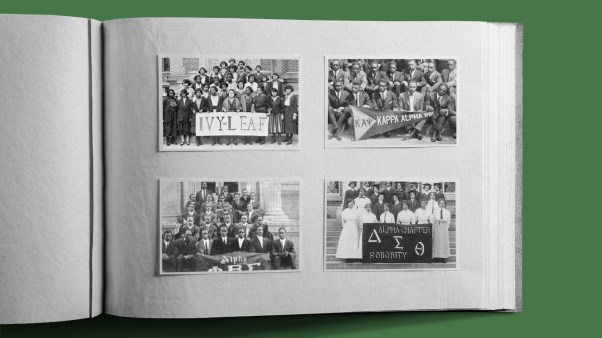Jesus Christ is arguably the most famous man who ever lived. His image is everywhere. But what did the God-Man from Nazareth actually look like?
We often imagine a particular “look” based on artistic renderings we’ve seen, but many of these designs are influenced by the artist’s culture. And while we may be able to assume certain visual traits based on the time and culture in which Jesus lived, there is little explicit evidence for these assumptions. In fact, the Bible tells us very little about Jesus’ appearance at all.
Other than Isaiah’s remark that he “had no beauty or majesty” (Is. 53:2), the Scriptures never tell us how tall Jesus was, what kind of hair he had, his body type, the color of his eyes, what sort of clothes he wore, or even the color of his skin.
It’s somewhat unexpected for the Bible not to comment on Jesus’ physicality, since back then a person’s physical looks often corresponded to their character traits. Ancient authors might note aspects of their main character’s appearance to highlight or foreshadow something about them.
For example, the Old Testament tells us King Saul was “as handsome a young man as could be found anywhere in Israel, and he was a head taller than anyone else” (1 Sam. 9:2) and King David was “glowing with health and had a fine appearance and handsome features” (1 Sam. 16:12). Each of these descriptions signaled their heroic and kingly appeal to the people of Israel.
The New Testament narrative only focuses on Jesus’ appearance in the Transfiguration (see parallel accounts in Matt. 17:1–8; Mark 9:2–8; Luke 9:28–36; 2 Pet. 1:16–20). And although there is much we could say about the ultimate significance of the Transfiguration, let’s look at it from a more philosophical perspective—and especially in its unique emphasis on Jesus’ face and clothes.
In Matthew’s account, the author notes that his face “shone” (17:2), while Luke says its appearance had “changed” (9:29). Before this, only a handful of texts even mention Jesus’ face. We know Jesus sets his face toward Jerusalem (Luke 9:51–53), that he fell “with his face to the ground” in Gethsemane (Matt. 26:39), and that people spit on his face and blindfolded him while he was on trial (Matt. 26:67; Mark 14:65). There are also texts about Jesus not showing “partiality,” which more literally refers to showing his face to people (Matt. 22:16; Mark 12:14; Luke 20:21).
Even though the Transfiguration texts don’t describe what Jesus’ face looks like, their emphasis on it is important. In ancient times as now, our face is one of the most relational parts of us—seeing someone’s face often involves having a personal encounter with them. It’s also seen as an intimate aspect of God when it comes to his unique appearances to humans in Scripture.
The Old Testament describes moments where God interacts with certain people “face to face.” The first time we see this phrase is after Jacob wrestles God, when the narrator says Jacob named the place Peniel, the Hebrew word for “face of God.” “I saw God face to face,” says Jacob. “And yet my life has been spared” (Gen. 32:30). God also reveals his face and speaks to Moses “face to face, as one speaks to a friend” (Ex. 33:11)—which was a rare and significant honor.
The phrase “face to face” shouldn’t be understood literally, since Moses’ request to see God’s face is denied (Ex. 33:18–20), but it’s an idiom for divine encounter that communicates relational closeness. In a similar way, the Transfiguration’s emphasis on Jesus’ face implies it is a divine encounter. And while we might not know exactly what Jesus’ face looked like, we come to learn this isn’t the most important thing to know about Jesus.
Another unique feature of the Transfiguration accounts is their mention of Jesus’ clothes. Matthew affirms they “became as white as light” (17:2) and Mark asserts they became “dazzling white, whiter than anyone in the world could bleach them” (Mark 9:3). Similarly, Luke says his clothes became “as bright as a flash of lightning” (Luke 9:29).
Our clothes are formed to fit and attach to our bodies and so they are, in some sense, an extension of our personal presence. Our clothes also both reveal and conceal us—they reveal something about our figure but also hide other aspects. And ultimately, clothes are created things and thus representative of creation. Humankind first sought to clothe themselves with fig leaves (Gen. 3:7) but God was their true tailor, making them “garments of skin” (Gen. 3:21).
The Gospel writers don’t tell us any specific details about Jesus’ transfigured clothes, other than that they shone. But this single detail says a lot—about Jesus and ultimately about us. The fact that Jesus was wearing clothing in his encounter with the Father and that they were shining along with his face makes a powerful statement: Everything that is united to Christ, even his ordinary clothes, is transformed by him. Whoever and whatever Jesus touches will eventually shine with light. Those of us who are united to Christ will one day be glorified as Jesus was glorified (1 Cor. 15:40–44).
Jesus’ clothes both cover and reveal him. They shine so brightly that we can’t see them in detail, but they also give us a preview—not only of his glory but also of our future glory and the glory of the coming kingdom. The Book of Revelation tells us those who persevere to the end will also be dressed in white clothes (Rev. 3:5). God invites his people to receive white clothes from him, and those in the heavens are described as being dressed in white robes (4:4; 7:9–14).
In other words, the emphasis on clothes in the Transfiguration narratives acts as a preview to the ultimate transformation of God’s people and their home. And although we might not know any other tangible details about what kind of clothing Jesus wore, the Gospel authors seemed to be writing with a more important reality in mind.
The Transfiguration is the only place in Scripture that includes a description of Jesus’ physical form—and even then, his form is mostly obscured by a blinding radiance. Yet the brightness of this scene is intentional. The Scriptures affirm throughout that humans cannot see God. Just as God told Moses that no man can see his face and live (Ex. 33:20), we are told that “no one has ever seen God” (1 John 4:12) and that God is “invisible” (1 Tim. 1:17; Heb. 11:27).
Paul further clarifies that God “dwells in unapproachable light, whom no one has ever seen or can see” (1 Tim. 6:16). And so, the light described in the Transfiguration narratives serve as two functions at once—it is both blinding and revealing. The light is blinding because no one can see God and live. Yet it simultaneously reveals that Jesus is the mediator between God and humankind and that it is only in and through him that we can see the true glory of God (John 1:14, 18).
Maybe this is why we don’t get a more detailed description of Jesus’ physical appearance. For other figures in the ancient world, it was appropriate. But for Jesus, who is “the image of the invisible God” (Col. 1:15), it is more suitable for the biblical authors to depict him in resplendent light. Yet it is also fitting for them to single out his face and clothes as the primary focal points of light, for he is also fully a man.
Ultimately, the Transfiguration accounts simply offer us another way to affirm what we have always said about Jesus: that he is truly God and truly man, possessing two natures in one person. It reminds us that we must respect both the transcendence and the immanence of Jesus. He is both near to us and far from us—he is both like us and unlike us. And one day, those who trust in him shall become just like him, for we will finally see him as he truly is (1 John 3:2).
Patrick Schreiner teaches New Testament at Midwestern Baptist Theological Seminary in Kansas City, Missouri. He is the author of numerous books, including The Transfiguration of Christ.











